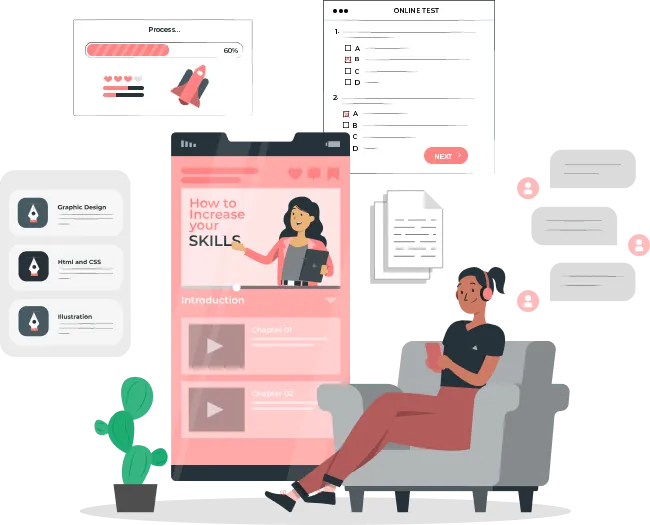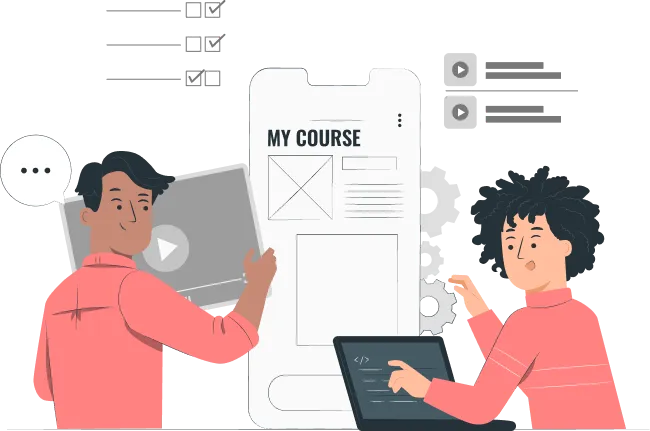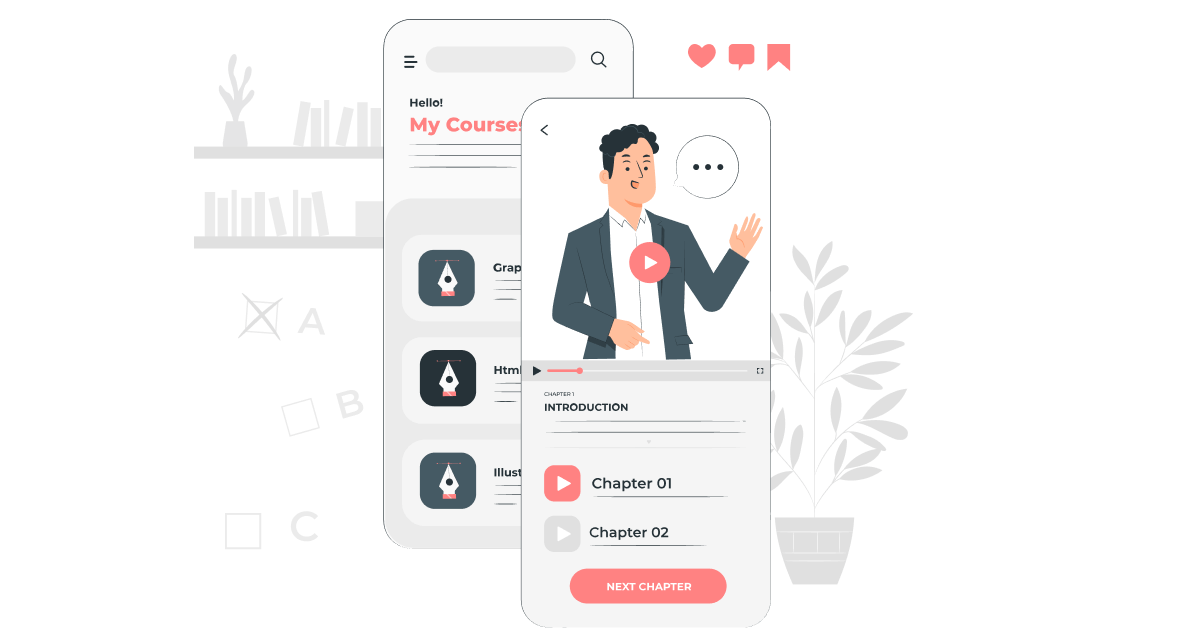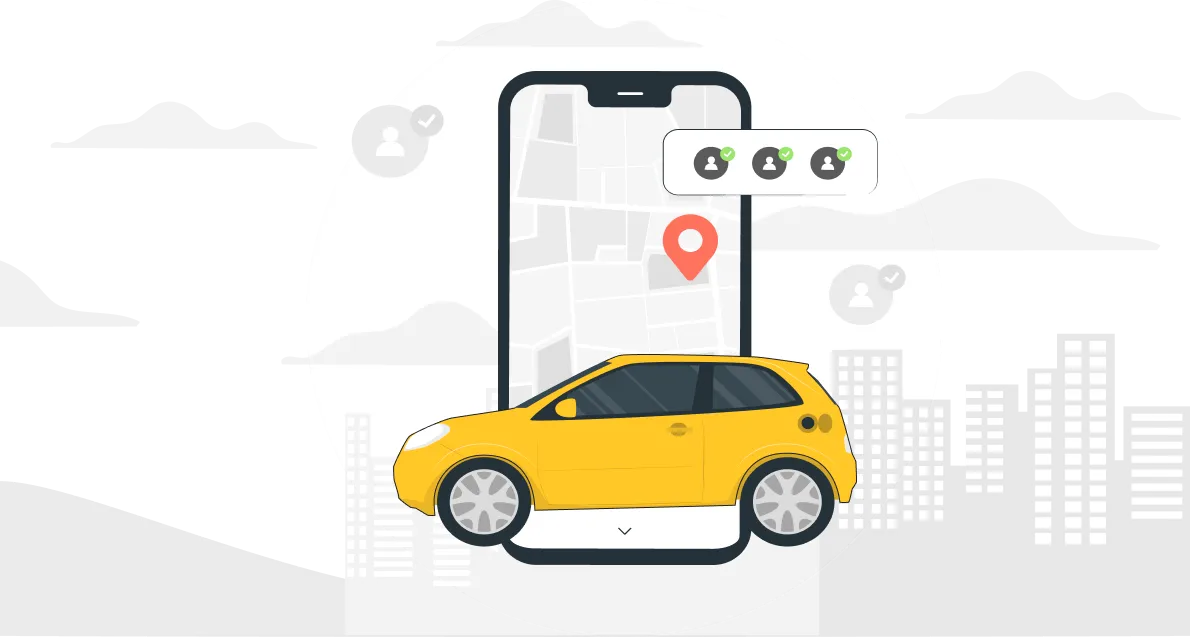Development of Educational Mobile Applications
Educational mobile applications have gained significant popularity in recent years. They help optimize the learning process, simplify teaching tasks for educators and students, and reflect broader trends in Russian education:
- Hybrid learning. This format combines offline and online education and became popular after the pandemic began. More than 62% of students continue to use remote learning practices in universities and schools. Many experts predict that the trend of distance learning will only grow.
- Microlearning. This involves presenting information in structured, concentrated short educational blocks to accomplish specific tasks. Over 48% of users find this format convenient for individuals with higher education who want to enhance specific skills.
- Combining practice with study. Gaining theoretical knowledge during practical activities is a modern and effective way to assimilate educational materials. This trend is especially relevant in IT, allowing professionals to continually develop.
- Education on social media. Many people acquire new information through entertaining content on social networks. Guides, instructional reels, and checklists help effectively master certain materials.
- Autonomous learning. This trend is especially popular among adults, allowing them to organize their learning process independently. Autonomous learning offers more freedom and opportunities to explore specific topics.
These trends explain the growing popularity of educational apps for mobile devices, highlighting the importance of creating functional and useful services for users.
What is an Educational Application?
An educational application is a mobile device program that helps users study various subjects, improve skills, and organize the learning process. Mobile learning applications significantly enhance the quality of education, with key features including:
- Accessibility. Users can access educational materials anytime and anywhere using their smartphones or tablets.
- Personalization. Mobile applications can adapt to the individual needs of each user, offering personalized content and allowing users to adjust their learning pace.
- Motivation. Gamified elements, interactive formats, and progress tracking can increase learners' motivation to study new materials.
Creating an educational application involves considering many nuances and focusing on user needs and the intended purpose of the software product.
Types of Educational Applications
Before developing an educational application, it's crucial to determine its purpose. Start by outlining the general concept, which will help choose the development direction. The most common types of modern educational applications include:
- Flashcard apps. These allow users to efficiently memorize information using cards with words, terms, or definitions, often including games and exercises for reinforcement. They are suitable for learning foreign languages, history, math, and other subjects. For example, the Chegg Prep app offers many free flashcards for studying various subjects.
- Educational games. These teach in a fun and interactive way, suitable for both children and adults. They can develop various skills such as logic, memory, attention, and reaction speed. For example, the Elevate app helps train attention, memory, and reaction speed.
- Dictionaries. These provide access to word definitions, translations, synonyms, and antonyms, often including audio pronunciations, usage examples, and grammar guides. For instance, the Merriam-Webster app allows users to learn and remember new words every day.
- Language learning apps. These offer courses for studying foreign languages, including grammar, vocabulary, pronunciation, and conversational practice. They use various teaching methods like video lessons, audio recordings, interactive exercises, games, and more. Popular examples include Chineasy, Memrise, and Duolingo.
- Specialized learning apps. These are designed to teach specific skills or knowledge, such as playing a musical instrument, drawing, or programming. They may include video lessons, step-by-step instructions, interactive exercises, and tests. For instance, the Otsimo app helps children with autism spectrum disorders learn to communicate.
- Exam preparation apps. These allow users to practice solving test questions similar to those they will face in exams. They may include theoretical materials, tips, and preparation strategies.
- Educational platforms. These are created for students of specific educational institutions, providing access to video lectures, course materials, assignments, tests, and other resources. They can be used for distance learning, organizing the learning process, and facilitating communication between teachers and students.
Once you have chosen the right kind of application, you can proceed to the further stages of development.

What Functions Should an Educational App Have?
Creating an educational application requires considering numerous details. Key functionalities for effective learning include:
- Watching Educational Videos. This is a crucial feature for many educational apps. It's important to make the streaming clear, convenient, and intuitive for users. For example, adding options for subtitles, video speed adjustment, and sound regulation can enhance the user experience.
- Knowledge Testing. Implementing knowledge checks is essential. Testing should be designed to help users thoroughly understand the material and fill any gaps in their knowledge.
- Additional Materials and Links. Providing links to supplementary materials can improve the quality and accessibility of educational content within the app.
- Chat with Instructor. Enabling communication with instructors makes using the app more comfortable and understandable, increasing user loyalty.
- Gamification. An interactive, game-based learning format makes the educational process more engaging and interesting.
For ease of use, the app should also include several important functional elements:
- Educational Blocks. It's important to divide the educational material into specific blocks, allowing users to focus on acquiring new information.
- Progress Tracking. Users can track their progress through the app. Achievements and rewards further motivate users to study the course material.
- Playback with Locked Screen and Audio Conversion. This is crucial for those who want to learn on the go during any free time.
Developing educational mobile applications requires considering the needs of each user, which is why you should initially determine which functions the service will perform.

Examples of Ready-to-Use Educational Mobile Applications
There are numerous educational mobile applications that lead the niche. Among them:
- Coursera. This mobile app offers access to over 3,000 courses from leading companies and universities worldwide. Users can study various subjects, earn certificates, and participate in various events.
- Duolingo. A popular mobile app for learning over 36 foreign languages. It has different sections for grammar, conversational practice, reading, and writing.
- Quizlet. An educational mobile app containing numerous sets of flashcards for memorizing material. It offers preparation for various disciplines and includes game options.
- Khan Academy. This app provides access to a variety of educational resources, including exercises, tests, and video lessons.
- Udemy. A mobile app offering free and paid courses in programming, design, and marketing. The platform is suitable for both corporate and individual use.
Before developing an educational application, it's helpful to review these examples, which can aid in prototyping your project.
Technologies for Creating Educational Mobile Applications
Various technologies are used to create educational application, with notable ones including:
- Kotlin. An open-source, statically typed programming language developed by JetBrains for the Java platform. It's designed to be more concise, safe, and expressive than Java while remaining fully compatible with it. Kotlin is often used for developing Android applications.
- Swift. An open-source, multi-paradigm programming language developed by Apple for creating iOS, macOS, watchOS, tvOS, and Linux applications. It is intended to be a modern, safe, and efficient programming language for building a wide range of applications.
- React Native. A cross-platform JavaScript library created by Facebook that allows developers to build mobile applications for iOS and Android using a single project. It uses React, a JavaScript library for building user interfaces, to declaratively describe application interfaces.
- Flutter. An open-source cross-platform SDK developed by Google that enables developers to create mobile applications for iOS and Android using a single Dart codebase. It uses its own rendering engine, providing high performance and native rendering.
Other technologies for developing educational mobile applications also exist. The choice of technology depends on the functions you plan to implement.

How to Develop an Educational App?
Creating an educational app involves several stages. The entire process can be divided into the following steps:
Project Evaluation. First, you need to conduct a thorough analysis and evaluation of the project. It's essential to draft a work plan to make the process as straightforward and understandable as possible. Some necessary features might include:
- Registration and authorization form. Users can save their progress in their personal accounts.
- Personal account. Shows users their chosen courses, progress, and other information.
- Course screen. Displays available lessons for a specific course.
- Lesson screens. Contain the educational materials for the selected course.
- Voice recognition. This function makes navigation more convenient.
- Achievement tracking. Users can see their achievements and current level through a ranking system.
- App store. Users can purchase subscriptions or in-app currency based on the chosen monetization strategy.
By hiring professionals, you can ensure that your project will be implemented efficiently, quickly, and cost-effectively.
UI/UX Design. The internal logic of the app is first mapped out, and a primary draft of the future app is created. Designers then develop a design concept. Design is crucial in educational app development as it defines the user experience and helps the app stand out among similar projects.
App Development. Once the design is approved, developers begin writing the code. The development process is divided into individual sprints, allowing for faster delivery of a working product. Concurrently, testing is conducted on the developed modules, ensuring the project is immediately tested in real-world conditions. Development usually takes about three months, but this can vary depending on project complexity.
Testing Different testing methods are used, including automated and manual testing, to verify the app's functionality from various aspects. Specialists meticulously check all user scenarios to identify and fix any bugs before the official release.
Release and Support The project is then published on the App Store and Google Play. Once the app passes review and is published, continuous monitoring, updates, and full support are necessary. Over time, expanding the app's functionalities may also be required.
You don't have to handle this alone. Our team of professional developers can help implement any complex project tailored to your business needs. We have extensive experience in creating educational mobile applications.
How Much Does It Cost to Develop an Educational App?
To create an educational app, you also need to estimate its cost. Typically, prices depend on several factors:
- Function complexity. The more features your app has, the more expensive it will be.
- Design. The cost of the app's design can vary depending on its complexity and the level of detail required.
- Platform. Developing an app for iOS and Android may have different costs.
- Technologies. Using more complex technologies can increase development costs.
- Number of developers. Larger teams require more payment for their services.
- Professionalism and experience of developers. Services of experienced developers are significantly more expensive.
- Project deadlines. If an educational app needs to be created urgently, the project cost increases.
If you want to create a high-quality and functional educational app, it might cost over 4 million rubles. Each educational app is unique, so the final price is calculated individually. Our specialists can estimate the development cost specifically for you.
We recommend starting with developing an MVP. This will help you test and better understand the development idea. This approach can significantly save resources and determine the primary functionalities of the future software product.
Conclusion
Mobile educational apps are becoming an integral part of the learning process. They open new opportunities for effective and accessible education, breaking stereotypes about traditional methods. Key advantages of educational apps include:
- Accessibility. Mobile apps are more accessible than traditional learning methods as they require fewer resources and are available even in remote regions.
- Convenience. Users can study anytime and anywhere using their smartphones or tablets.
- Interactivity. Mobile apps make learning more interactive and engaging, using games, videos, quizzes, and other multimedia elements.
When developing mobile educational apps, it's crucial to consider user needs and utilize modern technologies. React Native, Flutter, Kotlin, and Swift are just a few of the popular technologies that allow creating high-performance apps with a user-friendly interface. A good marketing strategy is essential for successfully promoting the app, attracting users, and making your app popular.
Educational mobile apps represent the future of learning. They open new possibilities for a more effective, accessible, and engaging educational process available to everyone. Developing educational apps is a process that should be entrusted to experienced professionals. Our company is ready to offer you our services. Submit a request on our website for a consultation and comprehensive support at all stages of cooperation.







